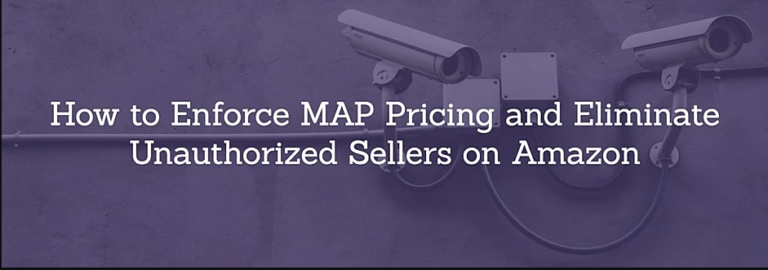Resources
Relevant Information and Actionable Takeaways

What is one simple thing you should be doing to manage your brand’s reputation (that
you’re probably not doing)?
Think back to your most recent purchase decisions. If you’re like the majority of shoppers, chances are you spent some of your time looking at star ratings or thumbing through detailed product reviews.
Over half of consumers expect responses to their online reviews, and 7 in 10 say they have changed their opinion about a brand after seeing the brand reply to a review. Consumers expect you to pay attention and reply to your negative (one and two star) reviews.
In this post we’ll cover:
- why reviews are so important (to the consumer and Amazon)
- why negative reviews are even more important than positive reviews
- what consumers expect from you when it comes to Amazon reviews
- how to manage your Amazon reviews

Consumers Trust Amazon Reviews
(Even When Shopping Offline)
As we all can attest to from personal experience, consumers continue to be more and more reliant on online reviews to help them make purchase decisions.
In particular, shoppers look to Amazon for product reviews. Although some sellers will find ways to game the system, Amazon has worked hard over the past few years to ensure their reviews are not manipulated by sellers/brands, even going so far as to file suit against websites that it alleges skew its product ratings. The end result is that consumers trust Amazon star ratings – they’re an extremely powerful form of social proof.

Even when shopping in store, shoppers frequently check prices and reviews online before making a purchase decision.
- a 2016 study showed that 39% of in store buyers read online reviews before purchases
- in 2018 BazaarVoice reported that 45% of brick & mortar sales started with an online review
These numbers underscore the importance of your products’ Amazon reviews, no matter where the final sale occurs.
Here are the top 3 risks of ignoring negative reviews on Amazon.
1. One Star Ratings Matter More Than Five Star Ratings
A Yale research paper examined the impact of online reviews on purchase decisions. While they found that a higher star rating leads to higher sales, they also found “evidence that one-star reviews have a greater impact than five-star reviews.” The researchers concluded that “the relatively rare one-star reviews carry a lot of weight with consumers. This result makes sense when the credibility of one-star and five-star reviews are considered.”
53% of customers expect a reply to their online reviews within a week
This is not the only reason you need to actively manage reviews. Consumers expect brands to be responsive.
2. Consumers Expect Brands to Respond to Reviews
Today’s consumers expect replies to reviews. Not convinced? Consider the following statistics:
- 53% of customers expect a reply to their online reviews within a week (Review Trackers, 2018)
- A 2018 BrightLocal study showed that 89% read replies to reviews
- 41% of respondents in a Bazaarvoice survey said that when a brand replies to reviews, it makes them believe the brand really cares about their customers
- Not replying may increase customer churn by up to 15% (Chatmeter, 2017)
- 7 out of 10 consumers changed their opinion about a brand after seeing the brand reply to a review (Marketing Charts, 2013)
These statistics are compelling. If you’re not actively replying to negative Amazon reviews, why not?
3. Negative Reviews Affect What Shoppers Will See & Purchase
The more 1 star reviews, the lower your overall star rating will go – especially if you haven’t built up a lot of reviews already. This is a twofold problem.
First, lower rated products are less likely to be purchased by consumers who view them.
Second, lower rated products are less likely to be shown to shoppers – Amazon wants to show higher rated products more prominently in the search results, because they know that consumers are more likely to go on to complete their purchase. They even won’t even let you run certain ads for products rated below 3.5 stars:
How to Manage Amazon Reviews
So, how should you manage reviews on Amazon?
- Ask for reviews – anyone selling your products should have an active autoresponder requesting reviews
- Remove negative reviews when you can – your team should actively remove negative reviews that violate Amazon’s Terms of Service (e.g., those that contain profanity)
- Reply to negative reviews – show all consumers that you care about, and stand behind, your products
- Analyze WHY you’re getting negative reviews – this is valuable market feedback!
We’ve found numerous reasons for negative Amazon reviews, including:
- packaging issues led to products being damaged in shipping (these types of issues led us to create custom premium packaging for Amazon for some of our brands)
- products were past their expiration dates, due to sellers not adequately managing inventory
- products that didn’t match Amazon listings
- consumers were unhappy with product quality and features
Review management is just one of the services you should expect when partnering with a 3rd party to sell your products on Amazon.
Conclusion
Online reviews, and particularly Amazon reviews, are important, as they drive consumer perception of your brand and therefore sales.
Negative reviews are of particular importance to shoppers, and shoppers expect brands to respond to those reviews.
Brands that appreciate the importance of Amazon reviews will have a system in place to actively generate and manage reviews.



